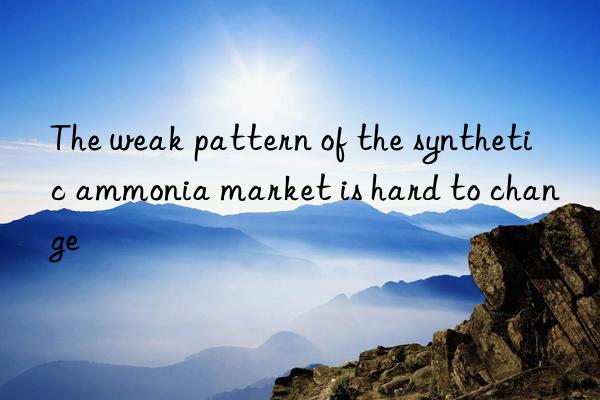
In April, the domestic synthetic ammonia market is difficult to change due to the weak supply and demand pattern. As of April 19, the ex-factory price of synthetic ammonia in Shanxi was 2,600-2,800 yuan, down 850-900 yuan from March 31.
"With the recovery of synthetic ammonia plant maintenance, new production capacity is gradually released, and the domestic market is well supplied. However, both agricultural demand and industrial demand are weak, and combined with the impact of the inflow of low-priced imported goods, it is expected that the domestic synthetic ammonia market may continue to be weak. Dropping." Fan Jing, a urea analyst at Zhongyu Information, analyzed and believed.
New installations will be put into production soon, with sufficient supply
According to the monitoring data of Longzhong Information, 8 companies will put into operation coal-to-synthetic ammonia plants from April to May, with a new production capacity of 2.1 million tons per year, and the production capacity of the domestic synthetic ammonia industry is expected to reach 76.23 million tons per year.
There are more devices planned to be put into production in the near future, which provides a guarantee for market supply. Shi Lu, an ammonia analyst at Longzhong Information, said: "Among them, the 270,000-ton/year synthetic ammonia plant of Shandong Jinmei Riyue Chemical Co., Ltd., the 270,000-ton/year synthetic ammonia plant of Shandong Runyin Biochemical Co., Ltd., which are planned to be put into operation in April, Shanxi Linxin Coal Coking Co., Ltd. 60,000 tons/year synthetic ammonia plant, Chifeng Zhongtang Special Steel Co., Ltd. 240,000 tons/year synthetic ammonia plant, Hohhot Sunrise Energy Co., Ltd. 300,000 tons/year synthetic ammonia plant, Hengli Petrochemical (Dalian) Chemical Co., Ltd. 350,000 tons/year synthetic ammonia plant, Qitaihe Bosheng Clean Energy Co., Ltd. 180,000 tons/year synthetic ammonia plant, and Fujian Yongrong Holding Group Co., Ltd. 500,000 tons/year synthetic ammonia plant will be It will be put into production in May."
Fan Jing said that recently, the synthetic ammonia plants of Sichuan Lutianhua Co., Ltd. and Dazhou Jiuyuan Chemical Co., Ltd. have been shipped one after another, and the synthetic ammonia plant of Shandong Luxi Chemical Co., Ltd. also plans to resume production in mid-to-late April.
At the same time, a large amount of low-priced imported synthetic ammonia is flowing into the domestic market, adding to the stagnation of my country's synthetic ammonia export, and further supporting the market supply.
The downstream operating rate is not good and the demand is reduced
Generally speaking, March to May is the peak season for fertilizer demand, but the current market for urea and phosphate compound fertilizer, the main downstream products of synthetic ammonia, is weak. In particular, the operating rate of phosphate compound fertilizers is less than 50%, and most of them are shipped from previous orders, and most factories are running at a high level of inventory, so it is difficult to increase the operating level in the short term.
"After late March, the demand for fertilizers has entered a gap season, and the main downstream urea of synthetic ammonia has also experienced a downward trend in the market, and it is out of control. As of April 19, the ex-factory price of urea in Shaanxi Province was 2,460 yuan, compared with 3 On March 31, it fell by 200 yuan." Shi Lu said.
Industrial demand for ammonia is also shrinking. Caprolactam is still in a state of loss, and the phenomenon of lower prices in downstream bidding is obvious; the supply of acrylonitrile is expected to increase, but its downstream demand is flat; the operating rate of acrylic fiber and acrylamide industry is expected to decline. All of these have led to weak support on the demand side of synthetic ammonia.
The source of imported goods is fierce and low prices are frequent
Due to weak downstream demand for synthetic ammonia and high inventory levels in key consumption areas, the global supply of synthetic ammonia continues to be oversupplied, resulting in a continuous decline in international external prices.
"It is expected that the arrival price of synthetic ammonia to Hong Kong in early May will be around 3,000 yuan. The current conversion price of ammonia to Hong Kong from northern ports is about 3,500 yuan. The ex-factory prices of domestic companies that mainly collect goods in Hong Kong in the early stage are mostly around 3,300 to 3,500 yuan. Therefore, imported ammonia The price of ammonia occupies a certain advantage. Due to the lag of imported ammonia, its price is obviously negative for the market. The difference in external price can ensure smooth shipment." Shi Lu said.
"The 25,000 tons of imported synthetic ammonia that was recently traded at US$455 is about to arrive in Lianyungang. Starting from the inflow of this batch of goods, the imported goods will gradually hit the domestic market. The inflow of imported goods has seized part of the demand market, so domestic synthetic ammonia companies are In response to the impact of imported goods, the ex-factory price is basically the same as the price of imported goods, and at the same time, it has led to frequent bidding at low prices in various places." Fan Jing said.
In addition, with the recent sharp decline in ammonia prices, there is basically no regional price difference in most regions, and the market will continue to move downwards, and will move closer to imported ammonia prices in the later period. In terms of raw materials, due to the recovery of domestic coal price supply, the raw coal inventory in major production areas continues to be high, the overall supply is loose, the coal price has fallen rationally, and the support for the cost of synthetic ammonia has weakened. The price of synthetic ammonia is negative. (Wang Hongzhen)



 微信扫一扫打赏
微信扫一扫打赏
